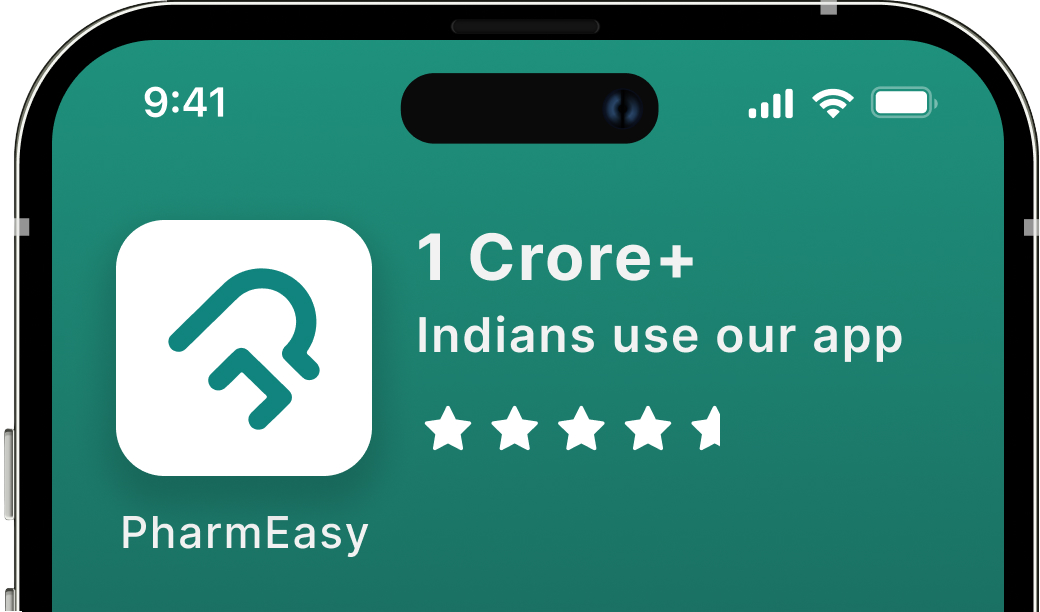Wegovy vs Ozempic: Differences, Uses, Dosage, Side Effects and More!
By Dr. Vishesh Bharucha +2 more

Get,

to manage your symptom
Get your,


4 Cr+ families
benefitted

OTP sent to 9988776655



You’ve successfully subscribed to receive
doctor-approved tips on
Whatsapp

Get ready to feel your best.

Hi There,
Download the PharmEasy App now!!


Register to Avail the Offer
Send OTPBy continuing, you agree with our Privacy Policy and Terms and Conditions

Hi There,
Sign up on PharmEasy now!!
Trusted by 4 crore+ families

OTP sent to 9988776655



You have unlocked 25% off on medicines




Code: NU25
By Dr. Vishesh Bharucha +2 more
Table of Contents
Are you wondering about the Ozempic vs Wegovy difference? While they both contain the same ingredient (semaglutide), these two drugs have been prescribed by doctors for different uses.
Ozempic may be prescribed by your doctor to aid in management of Type 2 diabetes mellitus while Wegovy may be prescribed to help with weight management1,2.

In this blog, we will explore the uses, dosing, side effects, mechanism, cost and the results of Ozempic vs Wegovy.
Wegovy and Ozempic have gained immense popularity over the years. Though both contain the same key ingredient, semaglutide, they have been approved and marketed under separate brand names for different purposes. Ozempic was developed first with the goal of management of type 2 diabetes mellitus while Wegovy was developed to help in weight management1,2,3.
This table shows the Wegovy vs Ozempic comparison to understand the key differences in the uses and doses available1,2:
| Ozempic | Wegovy | |
| Approval Year | 20173 | 20213 |
| Key Ingredient | Semaglutide | Semaglutide |
| Primary Use | Management of Type 2 diabetes mellitus and may help to reduce the risk of heart diseases in these individuals. | Chronic weight management in individuals who are obese or overweight and suffer from any weight related comorbidity such as type 2 diabetes mellitus, hypertension, etc4. |
| Doses and Forms Available | 0.25 mg, 0.5 mg, 1 mg, 2 mg Available as pre-filled injection pen with multiple doses. | 0.25 mg, 0.5 mg, 1 mg, 1.74 mg, 2.4 mg Available as pre-filled injection for single use only. |
Semaglutide, a glucagon-like peptide-1 (GLP1) receptor agonist, is approved by the FDA as 2 separate medications – Wegovy and Ozempic5.
Wegovy has been approved by FDA along with strict diet and physical activity mainly for chronic weight management in1,5:
Ozempic has been approved by FDA mainly for2,5:
However, it is also prescribed off-label for weight management.
While their indications differ, both medications may improve metabolic health and may help in weight management as well. Because they contain the same active ingredient, both these medications share many benefits, such as reducing insulin resistance, lowering inflammation, and potentially decreasing the risk of complications related to obesity and cardiovascular disease1,2,5.
Both Wegovy and Ozempic are generally administered as subcutaneous injections or as advised by your doctor. However, their approved uses, dose escalation schedules, and maximum doses differ.
Both medications are generally injected subcutaneously into the abdomen, thigh, or upper arm or as advised by your doctor. Your doctor will recommend that you take the medication once weekly, preferably at the same time each week1,2.
When we consider the Wegovy vs Ozempic dose, Wegovy is available in 5 different pens containing the prescribed doses of semaglutide (0.25 mg, 0.5 mg, 1 mg, 1.7 mg, and 2 mg)1,6. Ozempic is available in pre-filled pen semaglutide dosages of 0.25 mg (for initiating treatment and not for sugar control), 0.5 mg, 1 mg, 2 mg.
The differences in the Wegovy vs Ozempic dose in adults is as follows1,2:
| Starting Dose | Maximum Dose | Maintenance | |
| Wegovy | 0.25 mg / week | 2.4 mg / week | 1.7 mg or 2.4 mg / week |
| Ozempic | 0.25 mg / week | 2 mg / week | 0.5 mg or 1 mg or 2 mg / week |
If a dose of either of the medication is missed, it can be taken within 5 days. If beyond 5 days, the missed dose can be skipped. It’s ideal to consult the doctor for best advice on skipped dosages of medicines1,2.
Semaglutide injection must always be used as directed and at the dose recommended by doctor.
Side effects of both Wegovy and Ozempic are usually similar.
Common ones include7:
Serious side effects may include7,8:
If you face any of these symptoms, it is important to consult your doctor and seek immediate medical care.
Both Wegovy and Ozempic contain the same active drug semaglutide. Semaglutide has been extensively studied in individuals with type 2 diabetes and obesity. It has shown significant reductions in HbA1c levels in several studies. In the SUSTAIN clinical trial program, the average HbA1c reductions ranged from 1.45% to 1.55%, depending on the dose (0.5 mg to 1 mg weekly). The trial also demonstrated its benefit for weight loss5,9.
Another study, the STEP trial, established the effectiveness of semaglutide for weight loss at a dose of 2.5mg with a mean reduction in body weight by about 15% after 68 weeks10. Moreover, these trials also showed improvements in cardiometabolic health, including reductions in waist circumference, blood pressure, and lipid levels.
When comparing Wegovy vs Ozempic for weight loss, there are no studies directly assessing the same. Although, a metanalysis of latest weight loss drugs showed that individuals who took 2.4 mg of semaglutide lost more weight than those who took 1 mg of semaglutide11, which is the usual maintenance dose of Wegovy.
Thus, it can be summarized that the effects of Ozempic and Wegovy overlap. Both of these can lower blood sugar, manage weight, and improve cardiovascular outcomes, though the degree of benefit varies with the dose and target population. Generally, Ozempic is primarily chosen for patients with type 2 diabetes where glucose control is central, while Wegovy is the primary choice in obese or overweight individuals seeking chronic weight loss.
When we look at the Ozempic vs Wegovy cost in the U.S., Ozempic, primarily indicated for type 2 diabetes, costs around $936/month, while Wegovy, primarily indicated for chronic weight management, is priced at $1,349/month. However, these medications are much cheaper in Europe, these drugs are significantly cheaper. Their high cost and effectiveness have kept them in global headlines12.
Until recently, Wegovy was not available in India, though oral semaglutide (Rybelsus) was being used for management of diabetes. However, in June 2025, Novo Nordisk officially launched Wegovy in India as a once-weekly injectable for weight loss. Ozempic is still not approved in India, though the semaglutide molecule is available in oral form13.
Wegovy in India is priced from ₹17,345 to ₹26,015/month depending on the dose you require13. This is lower than global prices but still high for most patients. Moreover, most Indian health insurance policies do not cover weight management medications unless they are prescribed for conditions like type 2 diabetes. Hence, you should expect out-of-pocket expenses for Wegovy. Global demand for GLP‑1 medications has led to supply shortages, affecting availability in India too14.
In Ozempic vs Wegovy ingredients, both medications share the same primary ingredient, semaglutide, however, the excipients may differ. In Wegovy, phenol content is not used as inactive ingredients which is present in Ozempic.
Both medications act through the same mechanism, as they belong to the class known as GLP-1 receptor agonists. GLP-1 is a natural hormone in the body that helps regulate blood sugar and appetite. Semaglutide mimics the action of this hormone. By slowing down the emptying of food from the stomach, semaglutide makes you feel full for longer, which helps reduce food intake. At the same time, it improves how the body responds to insulin, keeping blood sugar levels more stable5,7.
Before starting Wegovy or Ozempic, a doctor must always be consulted. Any relevant medical and family history and the current health status should be disclosed to ensure safe and effective use. The following should be discussed with a doctor before using semaglutide7:
Wegovy and Ozempic may also react with certain medications such as5:
Always follow your doctor’s instructions closely as regular communication with your doctor helps reduce risks and ensures the best results.
Though both medications contain the same active ingredient semaglutide, they are prescribed for different purposes. While Wegovy is indicated for chronic weight management with or without diabetes, Ozempic is primarily approved for managing type 2 diabetes1,2. As the results may take time to show, its best to continue with the one prescribed by your doctor based on your needs.
However, you may sometimes need to switch medications due to supply shortages, insurance coverage issues, or access limitations that make one medication more available than the other. In such cases, it is important to consult your doctor. Although Wegovy and Ozempic share the same active ingredient, their dosing schedules and maximum dosages differ. Hence, it is always recommended that you consult your doctor to understand the dosing equivalence of new medication for best results1,2.
Moreover, self-switching or overlapping treatments can lead to serious side effects or reduced effectiveness. Therefore, always follow your doctor’s instructions and take the medicine as prescribed1,2.
Also Read: Everything to Know About GLP-1 Receptor Agonist and Its Role in Weight Management
Wegovy and Ozempic are both semaglutide-based medications but are prescribed for different purposes. Wegovy is mainly prescribed for chronic weight management, while Ozempic is mainly prescribed for the management of type 2 diabetes mellitus.
Though both medications contain the same ingredient, their dosing, approvals, and availability differ, making medical guidance essential when choosing or switching between them. If you are considering either medication, always consult your doctor to ensure the safest and most effective option for your health needs.
Wegovy and Ozempic are prescription medications both containing the same active ingredient semaglutide, however, their inactive ingredients can vary. Although both medications are FDA-approved, Wegovy is approved mainly for chronic weight management, while Ozempic is indicated for blood sugar control in type 2 diabetes1,2.
Ozempic which contains semaglutide, a GLP1 receptor agonist, can lead to weight loss when used off-label. However, it should not be used to manage weight loss alone as it is FDA-approved for the management of type 2 diabetes mellitus. It is important to consult your doctor and take this medication as directed1,2,12.
Both medicines contain semaglutide but are approved for different purposes. While the maintenance dose of Wegovy is usually higher than Ozempic, it is primarily for weight management, while Ozempic is for diabetes. Consult your doctor to understand which medication will be most suitable for you1,2.
Though both medications can show adverse effects, studies have shown that the risk of gastrointestinal side effects such as nausea and vomiting increases with higher doses of semaglutide. Hence, if you are taking any of these medications and facing any side effects, it is best to consult your doctor as these side effects can be managed by gradually adjusting the dose of your medication15.
Disclaimer: The information provided here is for educational/awareness purposes only and is not intended to be a substitute for medical treatment by a healthcare professional and should not be relied upon to diagnose or treat any medical condition. The reader should consult a registered medical practitioner to determine the appropriateness of the information and before consuming any medication. PharmEasy does not provide any guarantee or warranty (express or implied) regarding the accuracy, adequacy, completeness, legality, reliability or usefulness of the information; and disclaims any liability arising thereof.
Links and product recommendations in the information provided here are advertisements of third-party products available on the website. PharmEasy does not make any representation on the accuracy or suitability of such products/services. Advertisements do not influence the editorial decisions or content. The information in this blog is subject to change without notice. The authors and administrators reserve the right to modify, add, or remove content without notification. It is your responsibility to review this disclaimer regularly for any changes.
Comments

Leave your comment...
You may also like
Comments